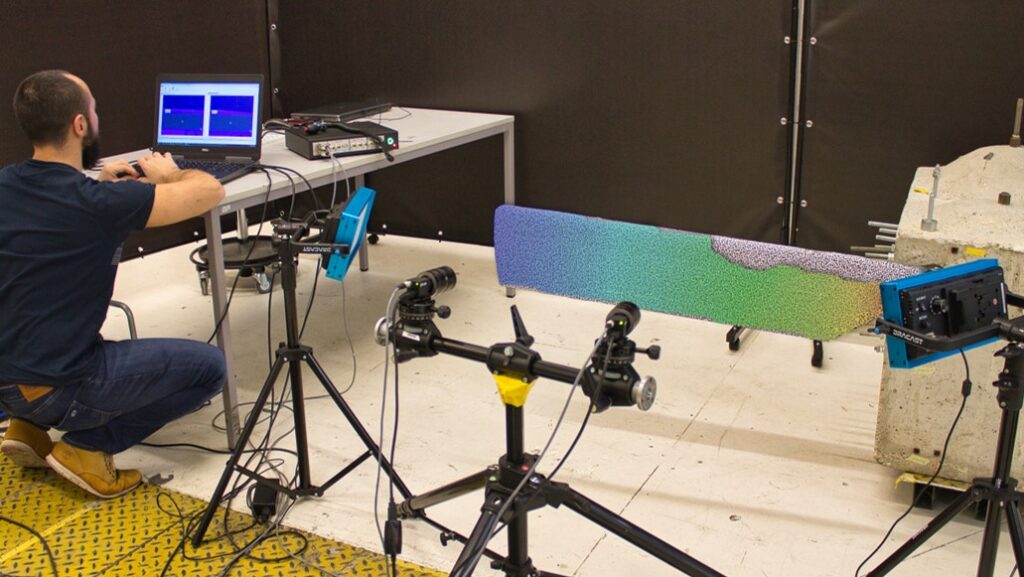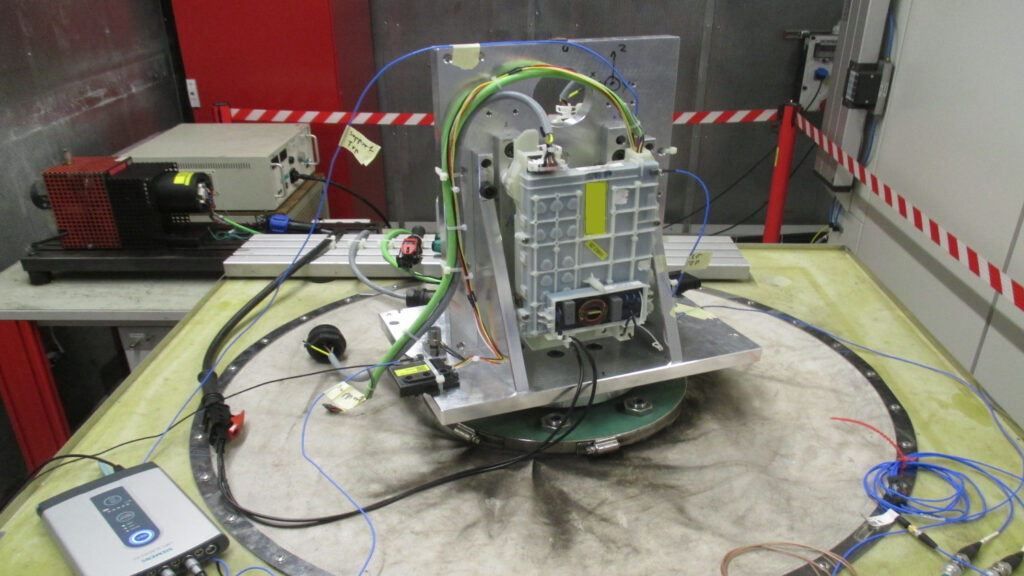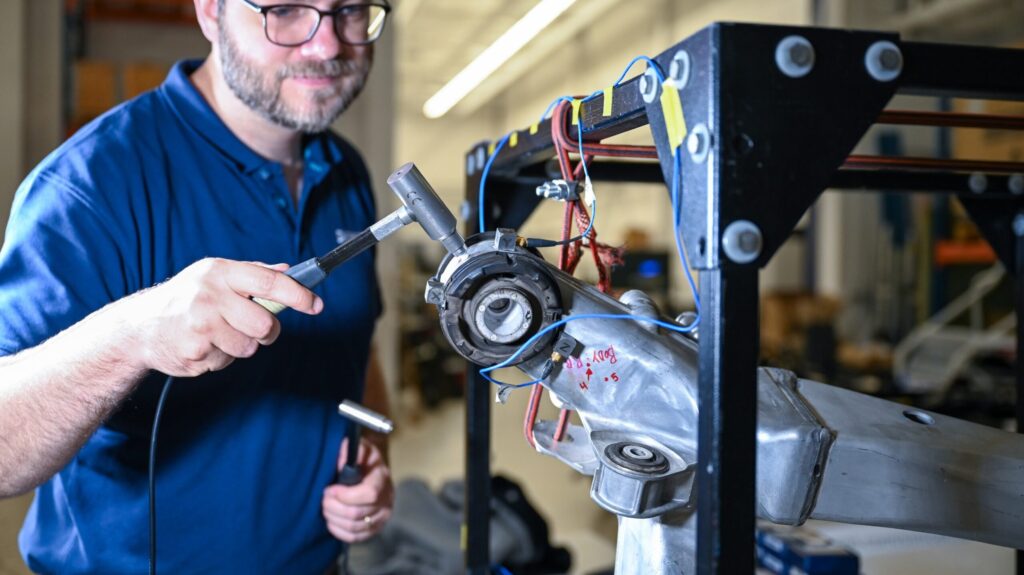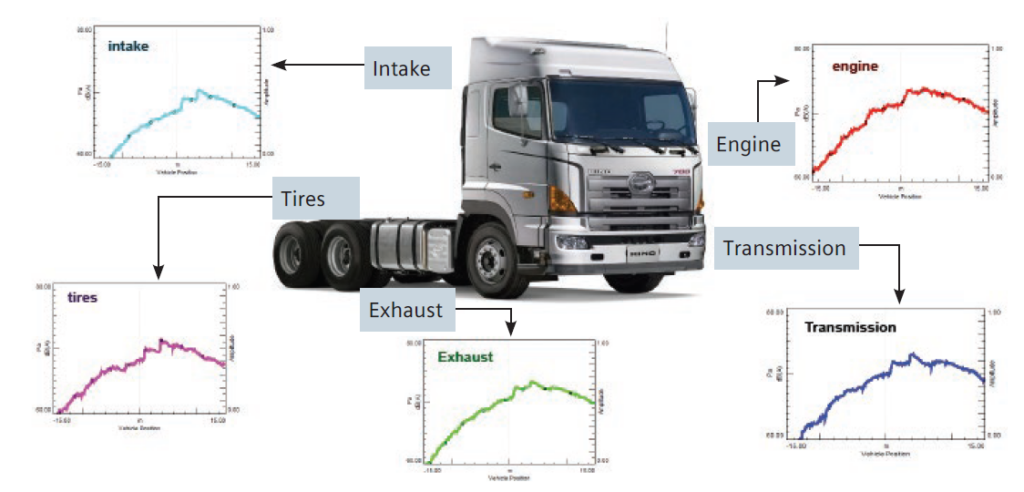Why to use?
Noise and Vibration Testing
Conduct extensive noise and vibration tests to address performance engineering challenges.
Durability Testing
Testing: Perform durability tests to evaluate and validate components or system performance under real-world conditions.
Root Cause Analysis
Identify sources of noise and vibration issues and trace them back to their origins for efficient troubleshooting.
Simulation Support
Frontload data into simulations and update virtual models using test results for improved accuracy.
Benchmarking
Test and compare the performance of existing components and competitive products.
Complex Component Testing
Generate test-derived models for components or subassemblies too complex for virtual modeling.
Flexibility in Use
Utilize the software across industries for long-term investments or short-term project needs.
Integration with Virtual Engineering
Seamlessly combine with Simcenter Amesim to support more realistic and efficient simulations.
Benefits
1. Enhanced Productivity with Workflows –
Increase Efficiency by 30%:
Workflow-based interface guides users through the test campaign, ensuring ease of use, data consistency, and higher productivity. Embedded analysis during data acquisition speeds up testing and ensures optimal data quality. Seamless data sharing across applications significantly boosts efficiency.
2. Effective Problem-Solving Capabilities -
Save 20% on Development Costs:
Provides tools to quickly locate the source of noise and vibration issues. Enables what-if analyses for evaluating fixes efficiently and cost-effectively. Reduces troubleshooting time by directly addressing root causes of design problems.
3. Integrated with Virtual Simulation:
Supports virtual simulation with loading information and feedback, enhancing model accuracy. Easily integrates with Simcenter Amesim for a more realistic and efficient simulation process.
4. Flexible Licensing Options -
Reduce License Costs by 25%:
Offers purchasing, yearly subscription, and scalable usage through value-based licensing, allowing users to tailor software access to project needs.
TechSim Positioning
End-to-End Support for Simcenter Testlab:
TechSim ensures seamless integration of Simcenter Testlab into existing workflows, optimizing setup and performance.
Expert Guidance for Troubleshooting and Analysis:
Provides hands-on assistance for using Simcenter Testlab’s comprehensive analysis capabilities to solve noise and vibration issues effectively.
Customizable Solutions for Varied Requirements:
TechSim helps clients leverage licensing flexibility, aligning software usage with short-term or long-term project goals.
Enhancing Simulation and Testing Synergy:
Supports the integration of test data with virtual models, ensuring simulations are efficient, accurate, and realistic.
Simcenter Testlab capabilities
Acoustic testing
Our acoustic testing solutions support a wide range of industry applications and engineering tasks, aligning with the latest international standards and adapting to your project requirements. With Simcenter Testlab, you can design innovative products featuring a distinct and effective acoustic signature.
NVH prediction
Using test and simulation data, you can accurately create or assemble systems in a virtual environment, evaluate the impact of modifications or components at various development stages, and maximize the use of data across your organization. The intuitive user interface enables non-experts to predict final product noise, vibration, and harshness (NVH) performance with precision. Supported by TechSim’s expertise, this solution helps your development team achieve superior NVH performance while managing development times and costs effectively.
Digital image correlation
Digital Image Correlation (DIC) is a non-contact optical measurement technique that uses images from digital cameras to capture 3D full-field data. Our advanced DIC solution accurately measures displacement, strain, and acceleration across the entire surface, seamlessly correlating with 3D finite element analysis results. Compared to traditional point measurement methods, it provides deeper insights with significantly reduced instrumentation time.
Durability testing
Streamline your entire testing process with our comprehensive durability testing solution. Simcenter combines robust and reliable data acquisition hardware with versatile processing and analysis software. This solution supports every stage of a test campaign, from channel setup and measurements to validation, data consolidation, analysis, and reporting, ensuring an efficient and integrated workflow.
Vibration testing
Choose a comprehensive solution for shock and vibration testing, offering tools that range from routine vibration qualification to advanced high-speed, multi-channel closed-loop shaker control systems. These systems integrate parallel data acquisition with robust analysis capabilities to meet diverse testing needs efficiently.
Rotating machinery testing
Our rotating machinery testing solutions enable NVH engineers to optimize the performance of rotating machinery by analyzing the effects of speed, torque, and control strategies on sound quality, torsional vibrations, and energy efficiency. Suitable for both lab and field environments, this multi-disciplinary testing system enhances data reliability, saves time, and provides deeper insights into machinery behavior.
Structural dynamics testing
Leverage our cutting-edge engineering expertise to enhance your testing efficiency, whether conducting impact tests on small structures, managing large-scale campaigns with hundreds of measurement channels, or validating 3D finite element models with experimental data. With Digital Image Correlation (DIC) technology, you can measure full-field 3D displacement, strain, and acceleration across an entire surface under any load condition. Using only a pair of cameras, this approach accelerates and streamlines development cycles for more responsive engineering outcomes.
Transfer path analysis
Quantify and analyze the various sources of noise and their transmission paths using Transfer Path Analysis (TPA). This process helps identify and assess both structure-borne and airborne energy transfer routes, from the excitation source to the receiver location. TPA enables you to determine which sources contribute most to noise issues and which ones cancel each other out. Once the sources and paths are quantified and modeled, optimizing the system’s vibro-acoustic performance and improving noise, vibration, and harshness (NVH) becomes a more straightforward design task.












